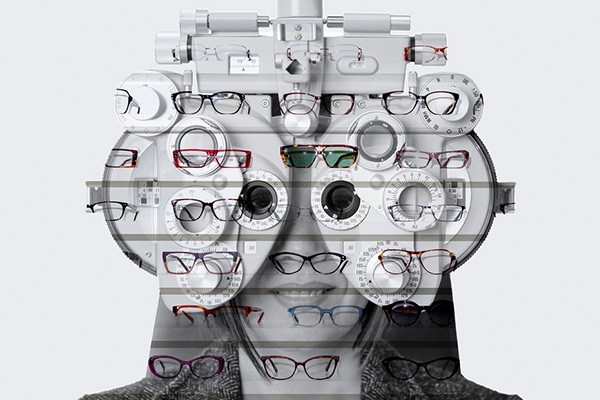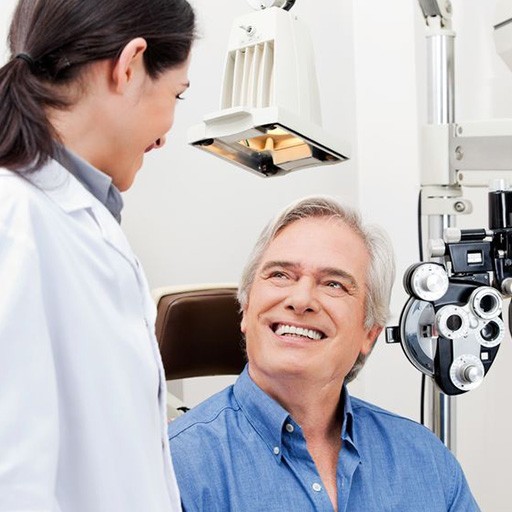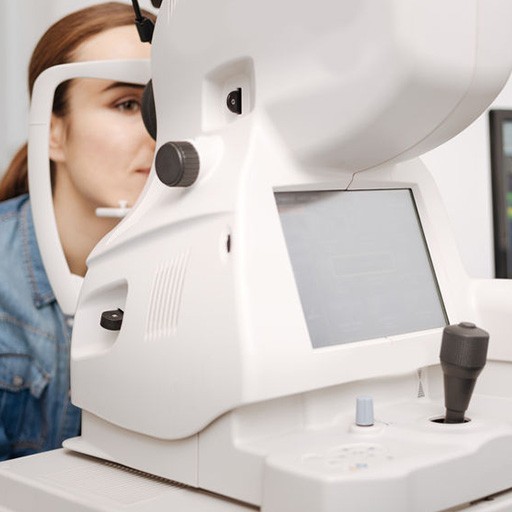Our Services
General Eyecare
Regardless of your age or physical health, it is important to have regular eye exams. During a comprehensive eye exam, our Doctors will not only determine your prescription for eyeglasses or contact lenses, but they will also check your eyes for ocular diseases, assess how your eyes work together as a team, and evaluate your eyes as an indicator of your overall health.
As optometric technology changes, it is even more important to select an eye doctor who has all the right qualifications and follows the latest developments in eye care. Our Doctors make it a policy to ensure that all staff members are up-to-date on the latest technology and techniques to make your visit as effective and comfortable as possible.
Utilizing cutting edge technology we are able to diagnose and manage diseases like glaucoma, macular degeneration and cataracts. Earlier and more precise diagnosis means earlier treatment and better outcomes for our patients.
Our full range of vision care services include examination of children and adults, contact lens fitting of all types, and co-management of laser and cataract surgery.

The visual system is a delicate and complicated part of the human anatomy. All parts of the eye and many parts of the overall body affect your ability to see. In our comprehensive eye and vision examination, the health of your eyes is evaluated from cornea to retina.
Your examination includes a number of tests and procedures that can detect eye problems that may go unnoticed and are not detected by school vision tests or routine health physicals.

Adult Eyecare
If I’m seeing fine, why do I need an eye exam?
Glaucoma, cataracts, and age-related macular degeneration are just a few of the common eye diseases which affect older patients.
Even if your vision is fine, annual eye health exams can detect eye and systemic diseases in the early stages when it is easier to prevent vision loss. Help maintain quality of life with good eye care.
People with diabetes, high blood pressure, rheumatoid arthritis and taking certain medications are especially at risk for eye diseases and vision loss.
Everyone wants to protect the eyesight and overall health for themselves and their loved ones – that is why annual eye exams are important. Regular eye care and exams can protect and prevent many eye diseases, if detected early.
Today, a whole range of eye problems can be treated successfully without total vision loss.
Many vision problems can begin at an early age, so it’s also important for you and your family to schedule an appointment with our Doctors, as your preferred optometrists.
Pediatric Eyecare
When should my child have their eyes examined?
According to the American Optometric Association (AOA), infants should have their first comprehensive eye exam at 6 months of age. Children then should receive additional eye exams at 3 years of age, and just before they enter kindergarten or the first grade at about age 5 or 6.
A pediatric eye examination by our Doctors includes:
- Evaluation of vision and ocular health
- Eye teaming (binocularity) skills
- Eye movement skills
- Focusing skills
- Evaluation for amblyopia (or “lazy eye”)
- Evaluation for strabismus (or eye turn)
For school-aged children, the AOA recommends an eye exam every two years if no vision correction is required. Children who need eyeglasses or contact lenses should be examined annually or according to their eye doctor’s recommendations. It’s important for parents to make sure their children’s eyes are healthy. Approximately 80 percent of all learning during a child’s first 12 years comes through vision.

Good eye health and vision is important to your child’s learning, and vision problems can affect their performance in school. Undetected or untreated vision problems can hinder a child’s ability to perform to their full potential in school. In fact, many eye diseases can impair vision or lead to vision loss, which is why it is important for people of all ages to have their eyes checked regularly.
At least 10 to 15 percent – or 8 to 12 million – children are at risk for vision impairment. Prevention of these conditions can be easy and can help your student perform his or her best at academics and sports, so schedule your child’s eye exam today with our eye doctors. While you are at it, schedule your own exam too!

Special Testing
Retinal Digital Imaging – Fundus Photography
A high-definition digital image of the retinal area helps your eye doctor in Huntington & Barboursville, WV diagnose and manage eye diseases in the delicate retinal area. Damage to these delicate structures of the retinal area is often the first sign of systemic diseases such as MS, diabetes and more. The retina is the “window to the body” and routine retinal imaging can help your eye doctor monitor the changes in your eye health from year to year.
Optical Coherence Tomographer (OCT)
Our OCT helps us better manage glaucoma and diseases of the retina because this technology allows the eye doctor to see the deep tissue layers in the eye. Similar to ultrasound, this diagnostic technique employs light rather than sound waves to achieve higher resolution pictures of the structural layers of the back of the eye. These high-definition images are the only way that they can actually see beneath the surface to the nerve fiber layers where damage occurs. Up until now, eye doctors had to use other tests to indicate damage in this critical area of sight. Common eye diseases such macular degeneration, diabetic retinopathy, and glaucoma are detected early by the OCT when the diseases can be more effectively treated.
ZEISS / Humphrey Visual Field Testing
Visual Field testing can help save vision because it is another test used to diagnose or rule out glaucoma and other neurological disorders that affect vision. This simple, but effective service has saved lives by detecting various medical conditions such as strokes, brain tumors, and other neurological defects.
Corneal Topography
Corneal topography is a computer assisted diagnostic tool that creates a three-dimensional map of the surface curvature of the cornea. The three-dimensional map is a valuable aid to the examining optometrist and can assist in the diagnosis and treatment of a number of conditions; in planning cataract surgery and intraocular lens (IOL) implantation (plano or toric IOLs); in planning refractive surgery such as LASIK, and evaluating its results; or in assessing the fit of contact lenses.
OPTOS Retinal Exam
Annual eye exams are vital to maintaining your vision and overall health. We offer the optomap® Retinal Exam as an important part of our eye exams. The optomap® Retinal Exam produces an image that is as unique as you fingerprint and provides us with a wide view to look at the health of your retina. The retina is the part of your eye that captures the image of what you are looking at, similar to film in a camera.
Many eye problems can develop without you knowing. You may not even notice any change in your sight. But, diseases such as macular degeneration, glaucoma, retinal tears or detachments, and other health problems such as diabetes and high blood pressure can be seen with a thorough exam of the retina.
An optomap® Retinal Exam provides:
- A scan to show a healthy eye or detect disease.
- A view of the retina, giving your doctor a more detailed view than he/she can get by other means.
- The opportunity for you to view and discuss the optomap® image of your eye with your doctor at the time of your exam.
- A permanent record for your file, which allows us to view your images each year to look for changes.
The optomap® Retinal Exam is fast, easy, and comfortable for all ages. To have the exam, you simply look into the device one eye at a time and you will see a comfortable flash of light to let you know the image of your retina has been taken. The optomap® image is shown immediately on a computer screen so we can review it with you
